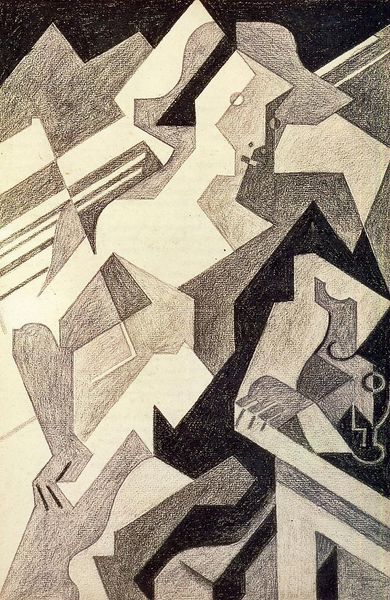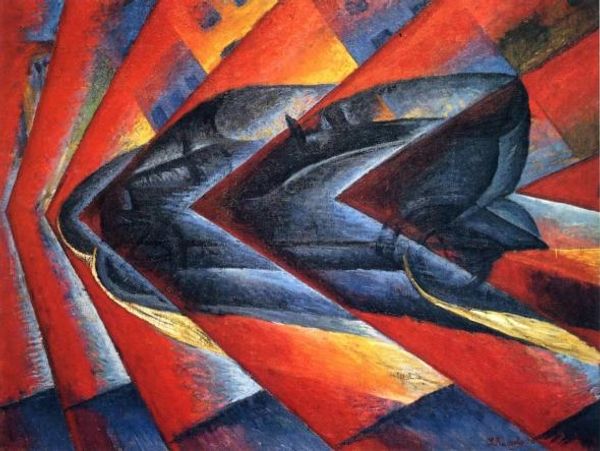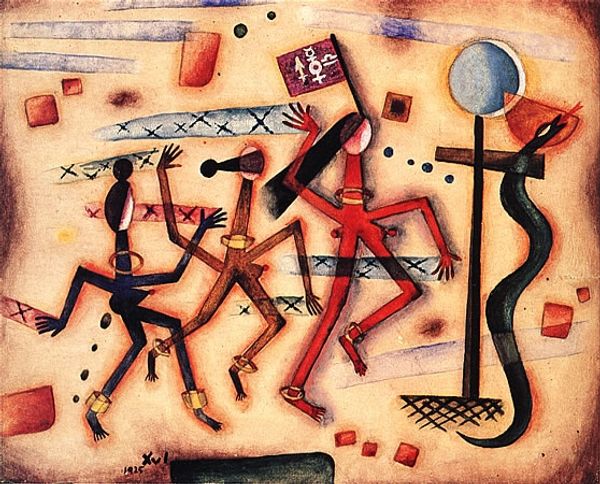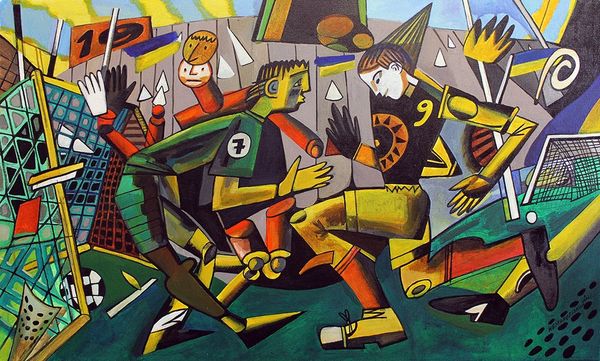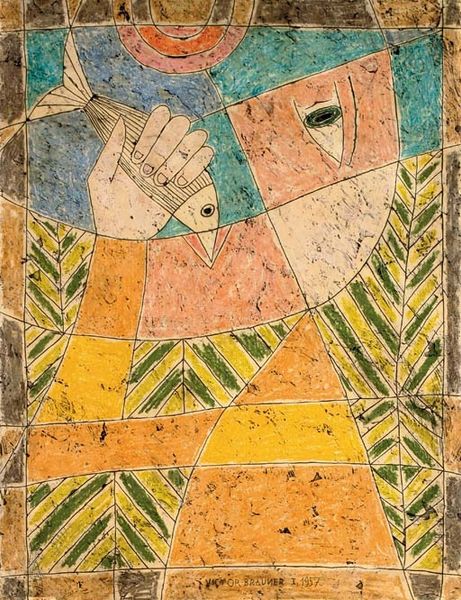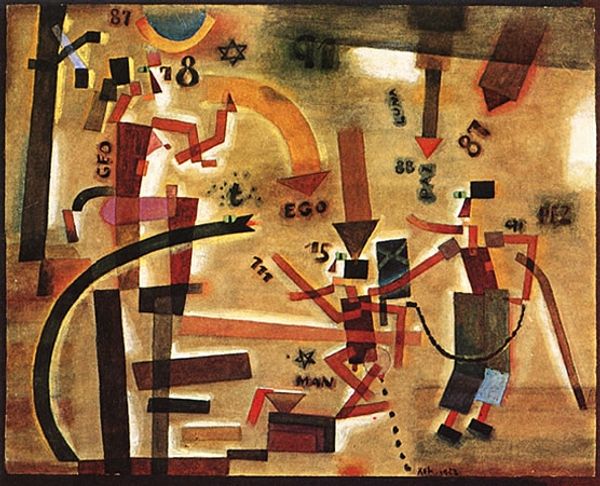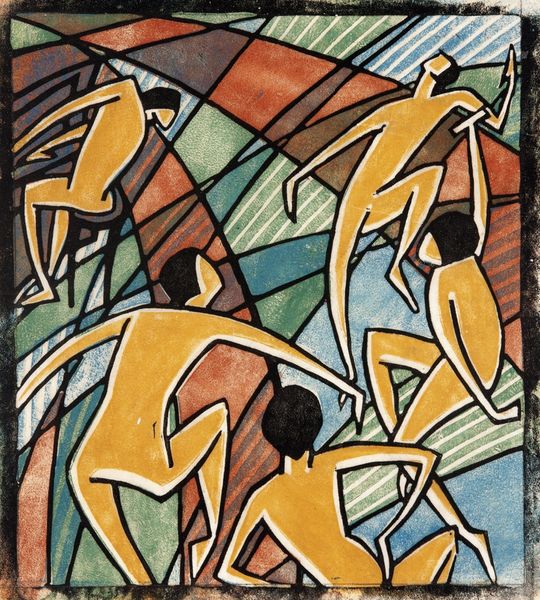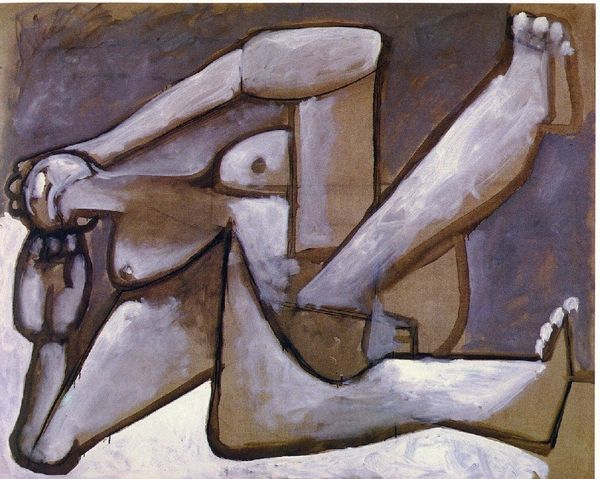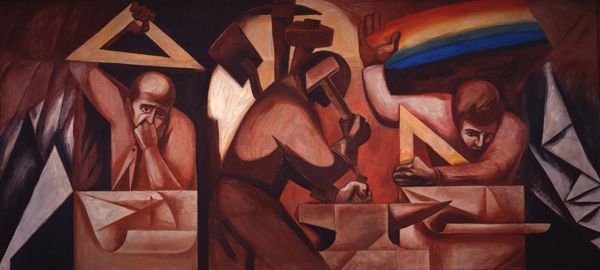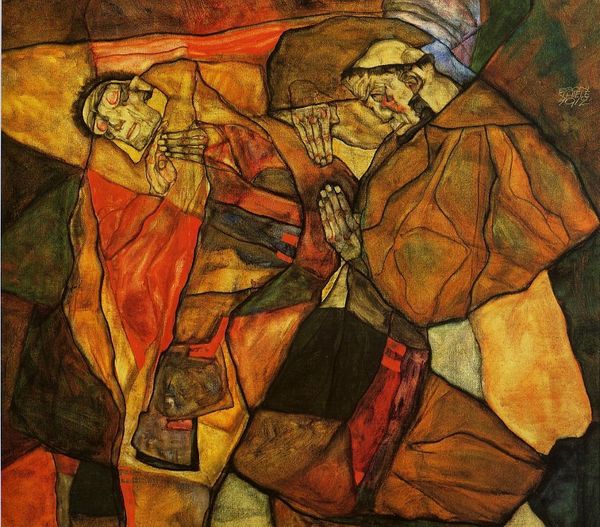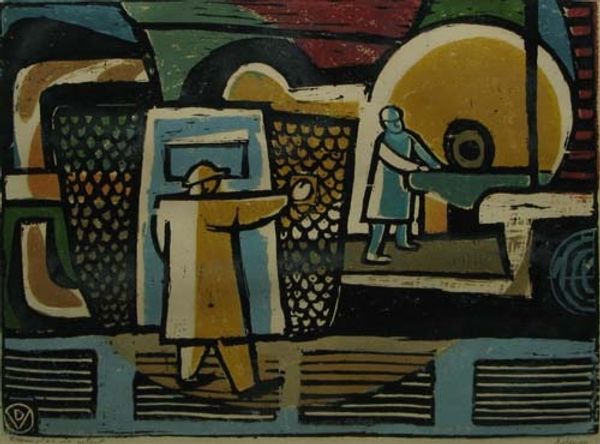
Copyright: Public domain US
Carlo Carrà painted "Western Horseman" in Italy during a period of great social and political upheaval. The painting is a fascinating example of Italian Futurism, an early-20th-century avant-garde movement that embraced technology, speed, and dynamism while rejecting traditional artistic values. Notice how the artist uses geometric shapes and fragmented forms to convey a sense of movement and energy. The horse and rider are not depicted realistically, but rather as a collection of abstract shapes that suggest their forms and actions. This stylistic choice reflects Futurism's rejection of academic art. The imagery might reference Italy's growing industrialization and militarization, but the painting also makes a more general comment on the rapidly changing nature of modern life. To fully understand this artwork, we need to consider its historical and cultural context by delving into manifestos and institutional records. This helps us appreciate how art is shaped by the forces of its time.
Comments
No comments
Be the first to comment and join the conversation on the ultimate creative platform.
